Grandmaster Flash: the man who gave us the turntable as an instrument
Flash on turntables, chamber music and the glory of finding the break nobody else has
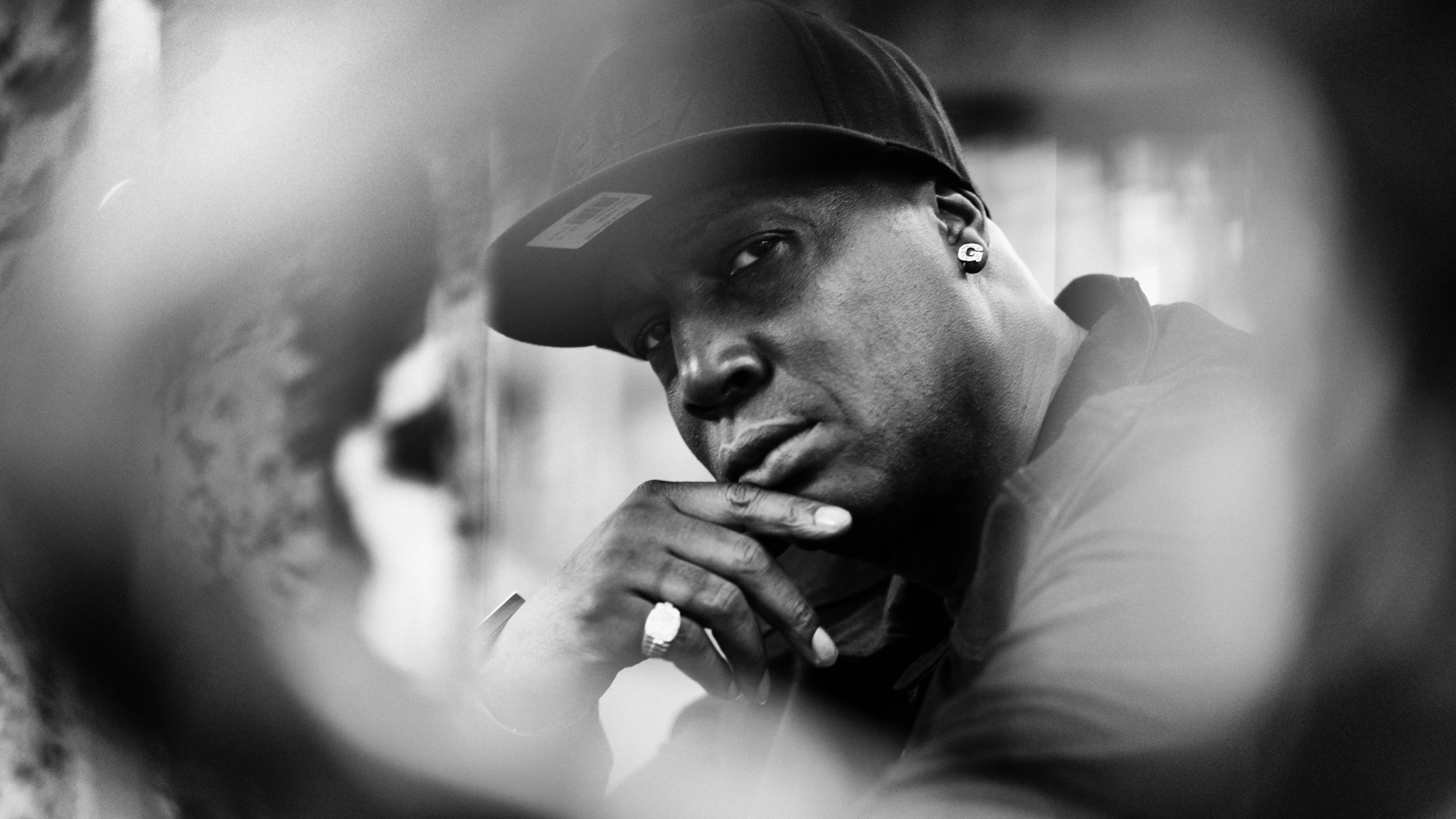
This interview originally appeared in What Hi-Fi? in July 2018
Grandmaster Flash wants to teach us about hip-hop.
“For me, if you grew up in a house where your parents were lovers of jazz, you will know who Miles Davies is,” he told What Hi-Fi?. “Your mom and pop will make sure you know who that is. If you grew up with rock, you’ll know who The Rolling Stones is.
“From a chronological standpoint, it’s always been misunderstood: where did this thing come from, and how did it become such a global phenomenon?”
But Flash’s is no ordinary history lesson. He hasn’t just read the book, he wrote much of its first testament. This is like being taught geometry by Pythagoras.
Obsessed with drum breaks, Flash designed his Quick Mix Theory – essentially the practice of backspinning the record and switching between two turntables playing simultaneously – to take those few seconds and turn them into minutes-long beds of music that became the canvas for break-dancers, and later the MC as we know it today.
He brought scratching into the studio – a technique widely credited to be the brainchild of Grand Wizzard Theodore, mentored by Flash as a fledgling DJ – while Grandmaster Flash & The Furious Five’s The Message effectively issued hip-hop with its license as vehicle for social and political commentary more than as entertainment.
The latest hi-fi, home cinema and tech news, reviews, buying advice and deals, direct to your inbox.
But if hip-hop is the music of the DJ, then there's no better way to teach its history than via the decks. Flash’s live show, Hip-Hop: People, Places and Things, is an audio-visual presentation of sorts, combining footage of the genre’s birthplaces (and a keen eye on his fingertips) with the records through which it became the most popular music on Earth.
As well as talking about the live show, Flash speaks with us about kit, why he now listens mainly to classical music and the ecstasy of finding that drum break. It's a lengthy conversation, yet it feels over in but a minute.
PLAYLIST
These songs all took on new lives when they were sampled. How many breaks do you recognise?
It makes sense now
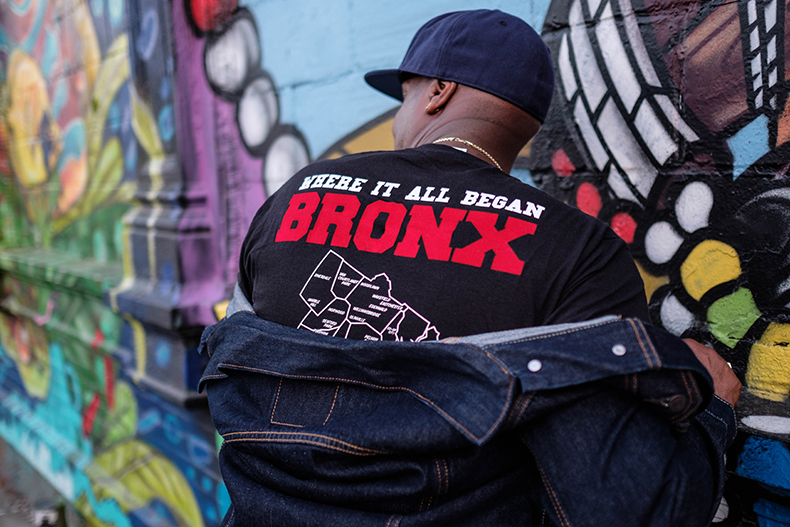
What Hi-Fi?: Tell us a bit about the new live show.
Grandmaster Flash: About three years ago I came to a realisation that, when you are trying to explain the beginnings of hip-hop culture from a genesis point of view, you can talk to a person but as you explain it you can almost see that they don’t fathom it. They’re like: “What do you mean you took this thing, and did that with that, to make that?” So I decided that I would put together a visual presentation of these things.
So I took a team of video shooters and editors, and we shot all the boroughs of New York, then we took the footage and edited it. What I did was come up with a way to musically and visually make this presentation so that when you see it, you get it.
So when I’m playing a particular music – let’s say Harlem – when I’m playing Harlem music you see Harlem on these huge LEDs, and you see the places where this happened or where that happened. If I’m playing B-boy breaks: that’s my area, that’s the Bronx, so now you see the area where I came up with the Quick Mix Theory. So you see the Projects, you see places, you see things.
This has gone over really well, because a lot of people who thought they knew hip-hop culture really thought they knew. And in my personal opinion, I think it’s so much more important that we historically try to get it correct as possible. Because journalists have stated that hip-hop is now the biggest music on planet Earth. So my perspective on that is, well, how did it begin?
That’s why I put together this show. So you want to figure out how a DJ cuts and scratches? Okay, let me put some cameras on my turntables. This way it’s almost like flipping a turntable in your face. I’m showing you how I came up with it 40-plus years ago.
How I put my fingertips on the record, and how I took duplicate copies of the vinyl and I’m going from turntable number one to turntable two, and then turntable number two to turntable number one, and I’m taking this small bit of a ten second drum solo – from a pop, rock, jazz, blues, funk, disco, r’n’b, alternative, Caribbean record – and I am looping it right in front of your eyes.
People have to understand this, because this later became the music for the break-dancer, but it also became the music bed for the MC to tell the story, to speak. So things like this, from a definitive point of view, I think it’s important that you know.
For me, if you grew up in a house where your parents were lovers of jazz, you will know who Miles Davies is, your mom and pop will make sure you know who that is. If you grew up with rock, you’ll know who The Rolling Stones is. From a chronological standpoint, it’s always been misunderstood: where did this thing come from, and how did it become such a global phenomenon?
So I said to myself I’d put it on an LED wall – when I talk to the promoters I insist on it. Because when you come into the room and see a DJ play, all you see is the horizontal three pieces of equipment: turntable one, the back of the mixer and turntable number two. You don’t actually see what he’s doing, you are sonically hearing but now I flip the turntable in your face so when I go from turntable one to two, and two to one, you actually go: “Oh shit, it makes sense now!”
So I just think it’s critically important now. I plead with the promoters that want to book me – I really want to do it with the LED wall. This knowledge is too, too important for people to not know the inception of how this thing came together. Because I’ve done hundreds of thousands of interviews and people still ask the same question: how do you do it? I’m saying, okay, I have to show them live, while I’m doing it.
I also show them the album covers, why I said that music has no colour and it has no country. When I say that I mean when I was shopping for records I’d check in the pop bin and the rock bin and the jazz bin and the blues bin – all the bins, all the genres of music, just to look for that tiny drum break.
And I said that music had no countries because I didn’t care the country it came from; if it had the proper drum break in one of those cuts on the album that I can humanly cut and paste and turn into a music bed, that’s all I cared about. I didn’t care about charts and this and that, it’s just: hot music is hot music.
And in certain parts of the show we must remember there’s certain people who passed away, that should be remembered for what they did that helped make this culture a global phenomenon. So all the elements that it’s possible to put on an LED screen, along with me cutting and scratching: this is what I’ve done.
Horns, strings and New York traffic
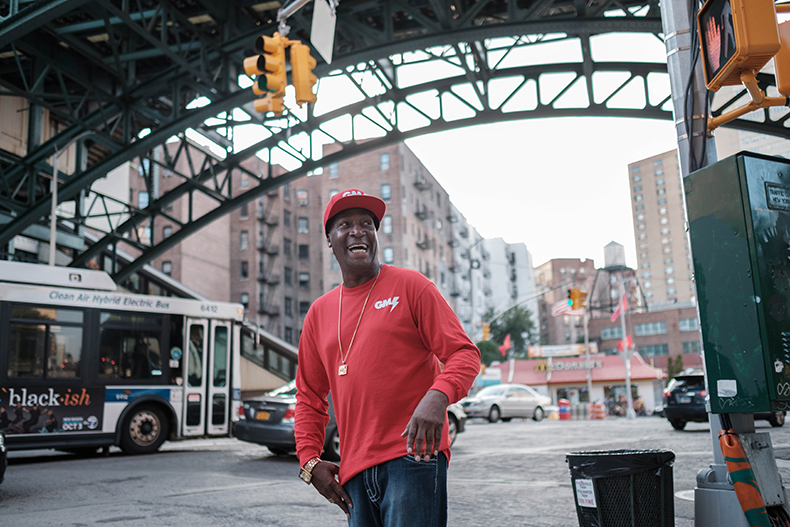
WHF: You effectively turned the turntable into an instrument in and of itself. Is there any format other than vinyl that could’ve given you such grounds for experimentation?
GF: I tell people it’s absolutely impossible to cut and scratch unless you’re putting your fingertips on the source material and turning the source material into two things, which is the actual audio and then using that source material as a controller. I did this when I was 17, this is how I came up with it.
Now modern technology has found a way to replicate that by way of using the CD-J. It was actually a simple way they did it: they did it with a SMPTE timecode, and your SMPTE timecode tells the MP3 in the laptop to go backwards and forwards and backwards and forwards, and follow the hands, follow the guy who has his fingertips on the source material. So it’s basically my idea in a different body.
I’m quite happy with it, because now I can travel with a hundred thousand records on a hard drive. Can you imagine if you tried to travel with that in crates? I don’t think that would be possible.
WHF: So you’re using the laptop now in your set.
GF: Yes, but I’m using a special control vinyl, so you can still see me doing what I’m doing. It’s the same exact process, but now if I’m in London I could play some of the favourites there, but if I’m in Japan I can play some of the favourites there, or if I’m in Australia …
But if I were trying to take a large portion of my collection on the road, that’d be quite a few people I’d have to take. So the genius side of that is it allows me to play all that wonderful music that was the pillars of why this culture even exists.
WHF: So how much of the set is built before you start playing and how much is dependent on audience reaction, getting those local favourites in, for example?
GF: I improvise all the time, and I do it on feeling. In a way I’m kind of guessing, but when you’ve done it for as long as I’ve done it … I don’t know, do you call that guessing? I don’t know what you’d call it. I don’t think it’s a knowing.
WHF: How widely do you listen when you’re at home?
GF: Oh, I listen to classical. I listen to chamber music. I love it: Bach, Stravinsky, Beethoven. I’m a lover of strings and horns. I listen to things that I can’t play, so I can possibly come up with something in the realm where I could play.
WHF: So when you’re listening you’re constantly thinking about how it could work creatively?
GF: Yes, or how the rhythms are. It inspires me to do other things in the realm where I could do it. I can’t play the record, but there’s something about the piece that would allow me to introduce that to you guys. I’m big on chamber music, I’m big on opera music, I’m big on pieces that have many changes and chamber music has many changes.
WHF: And how do you listen? Do you subscribe to any streaming services?
GF: With the radio stations in New York, I love being caught in traffic: it’s cool. I get to seriously listen. Some of the days I say: “Oh, that was really cool.” And I may insert that inspiration into something I’m producing, or I may do it while on the turntables, that rhythm.
Because, for me, nothing under the sun is original – everything comes from somewhere. And after doing this 40-plus years, I wouldn’t say I’ve heard it all but I’ve heard most of it.
Don't touch Joe's records
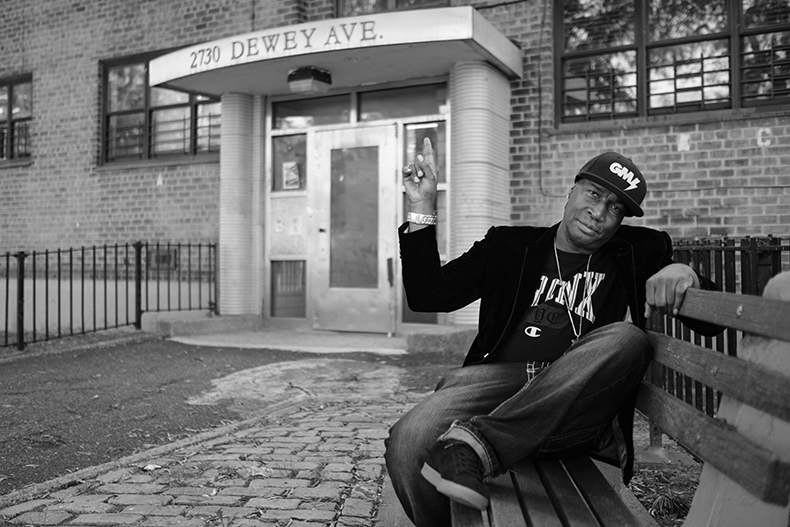
WHF: You’ve spoken before as well about your dad’s record collection: is it fair to say that was your gateway into music and DJing?
GF: Absolutely. Actually it was my gateway into the value of the vinyl. Because when I used to touch his vinyl I used to get my ass spanked, over and over. As soon as he would walk out the door and go to work I would go to the closet – and he would say “don’t touch Joe’s records” – and I would go get the record.
And I watched him as a toddler, how he turned the stereo on, so after watching him so much I waited for the door to slam and I would wait a few minutes and drag the chair to the closet, grab a piece of vinyl and drag the chair over to the stereo, turn it on and start dancing in the living room. If Joe turned around and came home because he forgot something you would get killed.
For some reason I didn’t care, but for whatever reason my father said this stuff is too valuable for you to touch and you can’t touch it. And I used to go, “okay”, and soon as he was out the door I would go get this stuff and play.
So I learned the value, and then from a scientific perspective, as I got older, I was like: “how is music coming out of these little black tunnels? Where is it coming from?”
My mother was a seamstress, so she had plenty of sewing needles around, so one day I just took the black disc – because that’s what I used to call them – and I put it on the stereo and I took a sewing needle and I put it inside the groove of the record and I felt the vibration. And I said: “Oh, so the music lives inside the black tunnels.”
And from there, I just became a geek. So my early teenage years I never went outside to play sports or hang out and drink – I was just constantly in awe of "how does this work"? Then from there I started to get into electronic components and stuff, by way of taking apart my big sister’s radio or going to the stereo in the living room and taking it apart, and I became public enemy number one in the house because I was on a constant search: how is this happening, why is this happening, what’s going on there?
And my mother says: “I might as well send you to school for this.” That’s when I started to learn: what is AC? What is DC? What is an ohmmeter? What is a frequency? What is a wave? What is a diode? What is a vacuum tube? What is the circuitry? What is a printed circuit? What is solid state? I started to understand, so in my early teenage years I kind of geeked out.
When I finally was able to get my hands on my own turntables it was like a marriage made in heaven. But then the big problem was I only wanted the part where the drum solo was. The rest of the record was totally horrible.
So I’m saying, how do I take this Thin Lizzy drum solo where he just did this for ten seconds, and how do I take the ten seconds and make it ten minutes? Or how do I take this drum solo from Michael Jackson’s drummer, or how do I take it from The Incredible Bongo Band? I just wanted that one particular drum section. I wanted to go from maybe a pop drum solo to a rock drum solo, into a jazz drum solo.
I did this not realising I was stitching together a bed of music. I didn’t realise that was what I was doing, but that’s the only part of these different genres of records that I enjoyed, without realising this was very entertaining to the break-dancers. Then later on human beings wanted to speak on it, the MC talking on a clean bed of music. I didn’t realise what I was doing, but it started something that’s pretty big right now.
WHF: We’ve spoken about what you listen to now, but are there a few records that have been particularly influential during your career, or that you keep coming back to?
GF: I don’t have favourites, because when I had favourites I used to clear the dance floor. If I go back 15 years I would say this record right here would be killer, and I would get to that country and I would play that song and it would clear the dance floor.
So I had to become what I feel now is a servant, and being a servant means I had to intensely read the room as opposed to trying to be the all-knowing. Read the room, read the room, read the room, read the room – I guess I kind of learned how to do that. The room tells me something, I can’t explain why, it just does.
And once I can get you with two or three songs, now I’m gonna get you with a thousand before I get off the stage. Of what I think you like, so I’m still guessing, and that’s what makes it not boring. It can’t be boring because I have to be on my toes, I have to be willing to change the record, because nothing’s etched in stone when it comes to this community of music. I have to stay on my toes, so it keeps me young.
That special break
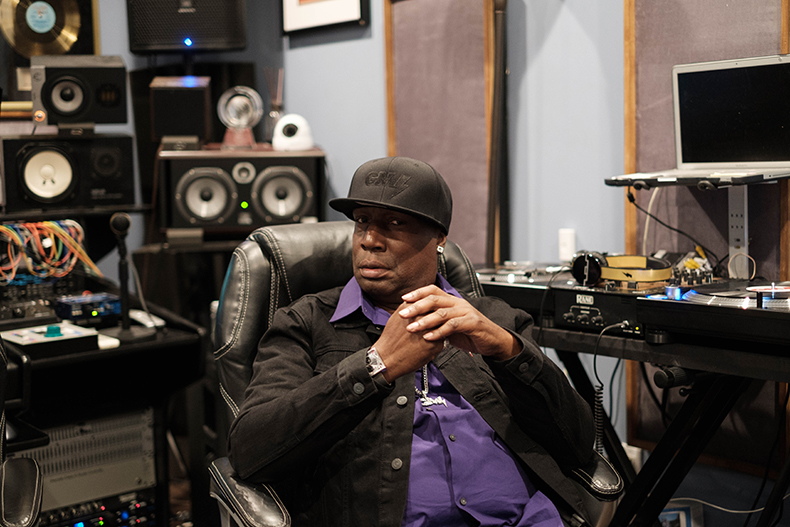
WHF: Do you remember the first record you bought, then?
GF: Early hip-hop was like a family community, so a lot of the people who came to my parties were friends of mine. On off days I would be invited to dinner, I knew a lot of their parents and their parents kind of held me responsible to make sure they got home.
So how I acquired my first records is I used to ask their moms and pops: “Hey, you got any records in the closet that you don’t want anymore?” They’re like: “Boy, I’ve been trying to get rid of these things in the closet for a long time.” I’m saying: “Can I have them?” and that’s how I acquired my collection.
My first song that I bought? I really don’t know; this is a good question. I would be about 10 o’clock in the morning on Saturday and I probably wouldn’t get back to my house until about nine o’clock at night, going around buying records. Certain record stores had turntables where you were able to test it right then and there, and I had a relationship with these people so if it was wack they would take it back and put the shrink wrap back around it.
So I don’t remember the first record that I bought, but there were so many records before it that I got for free from my fans’ parents.
WHF: And what is it about having a physical collection of records that remains so attractive?
GF: You’ve got to realise that this whole thing of hip-hop culture was based around the DJs. So what made this so wonderful was there was a friendly competition between Kool Herc, Afrika Bambaataa, Grandmaster Flash and our understudies finding that special break that you know your competitors don’t have. It’s such a euphoric feeling.
Like when Herc found Apache, he was under heavy guard. You would never see the album cover of where it came from. Months later it leaked. But when I found Take Me to the Mardi Gras by Bob James, I too was under heavy guard so you wouldn’t know what that was.
But finding things like that, to go out on your journey and to go to the second hand stores where they’ve got music crates in the back, to go to the record shop and buy new records and try to find that break is a joyful thing. It’s an extremely joyful thing, especially when you find a few and you are like the don for a couple of weeks because all your competition doesn’t know what it is that you have.
Having the physical record is quite amazing. If I were able to have the promoters pay for it, I’d bring my crates out. That’s the joy of having vinyl, because many people don’t use it today. And it’s almost too easy to find records: you can go on the internet and find a lot of the stuff, but I think the struggle of trying to find that song that nobody has is an extremely wonderful feeling.
But here it is years later for me, and now I’ve decided to take the sheet off of it and show you. And this is what Hip-Hop: People, Places and Things is about. Let me show you how it happened. If it’s the biggest music in the world, how did it happen? It’s not whoops, or by happenstance; it’s maths, science and a lot of heavy lifting for many people many, many years ago. I think this needs to be explained.
MORE:
